Three important environmental skills you can only gain through hands-on work
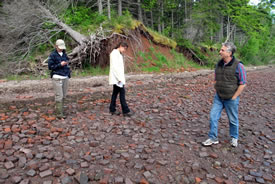
Danielle Horne (NCC), Jamie Fraser (NCC) and John Caraberis on the brick beach, NS (Photo by NCC)
I have always wanted a job that allows me to work outside. Last summer, I was one of the lucky few students to have an internship with the Nature Conservancy of Canada (NCC). In an average work week, I spent two to three days working in the...
Exploring the Maritimes with NCC
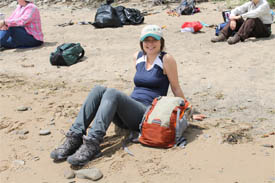
Siobhan Darlington at New Horton, NB (Photo by NCC)
As a Haligonian (a person from Halifax, Nova Scotia), I’ve had little experience with the province of New Brunswick. I’ve driven through with my family, and I’ve camped at Kouchibouguac National Park with friends, but...
Conservation Conversations: A speakers series in PEI
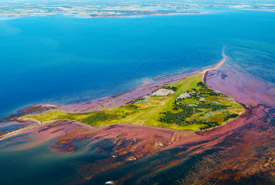
Governors Island, Prince Edward Island (Photo by NCC)
Prince Edward Island is a small province, full of heart. We have beautiful landscapes and unique ecosystems. As Program Manager for the Nature Conservancy of Canada (NCC) in PEI, I feel blessed to work in this province where co-operation is the...
Hammering home the message of community leadership
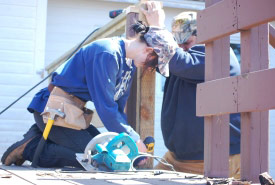
NBCC Moncton Carpentry student working on a public viewing platform at Johnson's Mills, NB (Photo by NCC)
Every summer, massive flocks of shorebirds journey through the Bay of Fundy from the Canadian Arctic before heading to South America. Among the feathered visitors, approximately 80 per cent of the world's population of semipalmated sandpipers stop...
Giving hope to wildlife: How rehabilitation and conservation go hand in hand
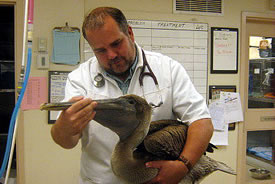
Dr. Barry MacEachern (Photo courtesy of Barry MacEachern)
It would seem that wildlife rehabilitation and wildlife conservation go hand in hand. As the main veterinarian for the Hope for Wildlife Rehabilitation Society, I have had a unique chance to see how the two areas intersect. In my mind wildlife...
Yes, B’y! Adventures in the Grassy Place.
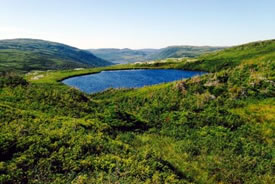
Mountaintop lake, Grassy Place, NL (Photo by NCC)
As conservation planner for the Nature Conservancy of Canada’s (NCC's) Nova Scotia and Newfoundland programs, I am fortunate to have visited some truly astonishing places in the Atlantic Region. The latest mission was to reach a 3,880-acre...
Eel-grass: A moment in time
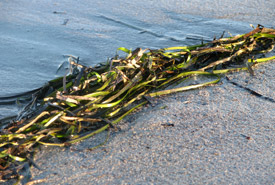
Eel-grass, Port Joli, Nova Scotia (Photo by NCC)
As we bushwhack through dense alder thickets, we hear the drone of a small plane flying back and forth over the Pugwash Estuary. It is a perfect summer day in August with a clear blue sky, perfect for capturing aerial imagery of Pugwash. The...
Rediscovering Newfoundland
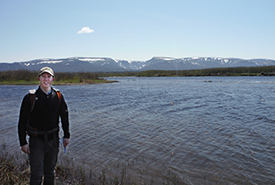
Brandon Ward posing for a picture while performing forest ecological classification (FEC) on the Grand Codroy Estuary (Photo by NCCl)
To say I was excited to land the position as a Nature Conservancy of Canada (NCC) conservation intern for the summer of 2014 would be an understatement. In fact, when I got the call offering me the job, I could hardly resist bursting into smiles...
Urban gardens and conservation
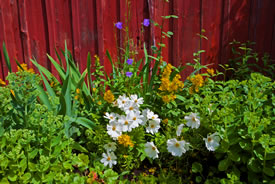
Flowerbed (Photo by Bengt Nyman, Wikimedia Commons)
Usually when you hear about land conservation, it usually refers to the conservation of places that are still “wild” — meaning they haven’t undergone any large-scale urbanization. However, we often forget about urban...
Bad news for bats? How White-nose Syndrome threatens Canada's bat populations
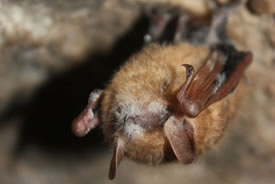
Tri-colored bat with white-nose syndrome (Photo by USFWS)
Bats are an important part of Canada’s biodiversity. They eat huge numbers of insects, some of which are crop and forestry pests. In the U.S. alone, it is estimated that bats provide insect control services worth between $3.7 and $53 billion...

